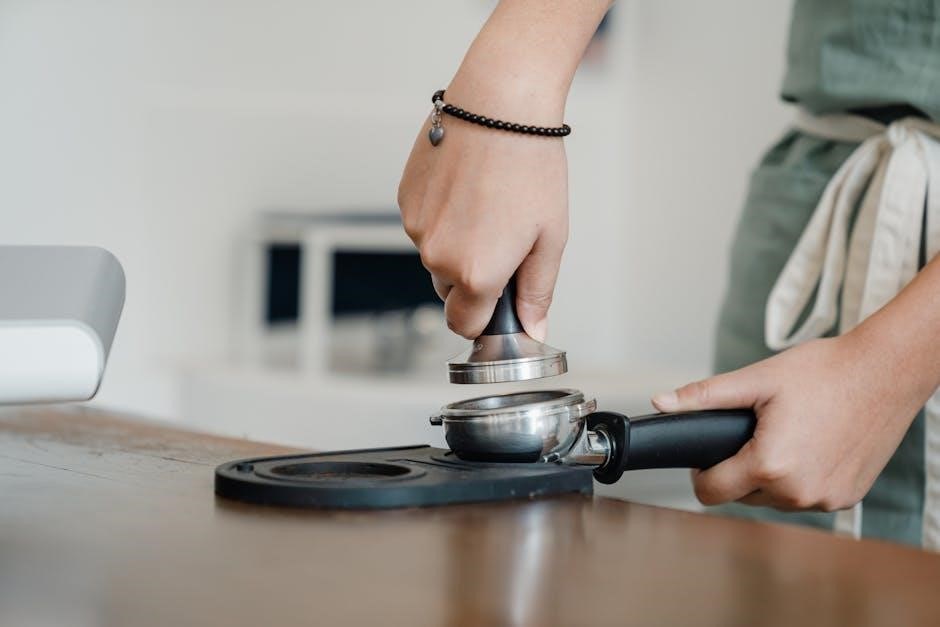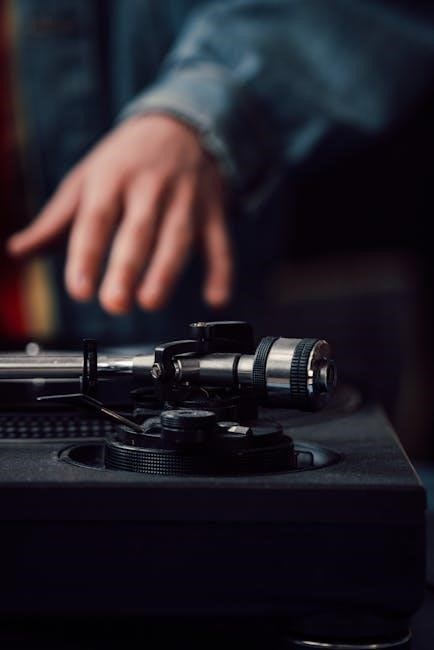Manual vs. Automatic Turntables: An Overview
The core difference between manual and automatic turntables lies in how you start and stop playback.
Manual turntables require you to physically place the tonearm on the record, offering a hands-on experience, while automatic models automate this process for convenience.
Key Differences in Operation
Automatic turntables feature a mechanical system that moves the tonearm with the press of a button.
Manual turntables require you to lower the tonearm, and to life the lever back up at the end.
Manual Turntables: The Hands-On Experience
With manual turntables, you’re the DJ.
You’ve got to physically place the tonearm on the record to start it, and lift it off when the side’s done.
When playing records on a manual turntable, you must physically place the tonearm in the correct position on the run-in groove.
Once the record has finished playing, you would then need to return the tonearm back to its resting position.
You will need to be comfortable lowering the cueing lever and lining up your stylus to land at the beginning of the record groove.
You will also want to stick around and stay awake, to lift the lever back up at the end.
Automatic Turntables: Convenience at Your Fingertips
Fully automatic turntables feature a mechanical system linking the platter and the tonearm.
With the simple push of a button, the arm will rise up and lower precisely at the start of your record.
An automatic turntable will lift the tonearm out of the resting position and lower it onto the record at the right place.
After it is finished, the tonearm will automatically lift and return to its resting position at the end of the record.
Most automatic and semi-automatic turntables will also turn off at the end of the record.

Sound Quality Considerations
The debate rages on: do the extra parts in automatic turntables negatively impact sound quality?
Some argue that fewer mechanics lead to purer sound, while others claim quality materials negate any audible difference.
The Argument for Manual Turntables and Purity
Audio purists often favor manual turntables due to their simpler build.
The argument centers around the idea that fewer moving parts mean less potential for vibration and interference, resulting in a cleaner, more unadulterated sound.
Without the mechanical systems required for automation, manual turntables are perceived to offer a more direct connection to the music, preserving the nuances and subtleties of the vinyl recording.
The absence of these automatic features minimizes potential sources of noise or distortion, allowing the listener to experience the music in its purest form, as intended by the artist.
The reduced complexity translates to a more transparent and accurate reproduction of the audio signal.
Automatic Turntables: Can You Hear the Difference?
The question of whether one can audibly discern a difference between automatic and manual turntables is a subject of debate.
Defenders of automatic turntables argue that well-designed models, crafted with quality materials, can deliver comparable audio fidelity to their manual counterparts.
They contend that advancements in engineering have minimized the impact of automatic mechanisms on sound quality.
Furthermore, some listeners may find the convenience of automatic operation outweighs any perceived sonic compromise.
Ultimately, the ability to detect a difference often depends on the listener’s equipment, critical listening skills, and personal preferences.
While some audiophiles may insist on the purity of manual turntables, others may find automatic models offer a satisfying listening experience.

Ease of Use and User Experience
When weighing manual versus automatic turntables, usability is key, especially for vinyl newcomers. Automatic turntables offer user-friendly features like simple controls and clear instructions. Manual turntables have a learning curve and require more hands-on involvement.
Manual Turntables: The Learning Curve and Ritual
Manual turntables demand a hands-on approach, presenting a steeper learning curve for beginners. You must learn to carefully place the tonearm on the record’s groove and lift it when finished. This process, while initially daunting, transforms into a ritual for many enthusiasts.
This ritualistic interaction fosters a deeper connection with the music. The tactile nature of manually operating the turntable enhances the listening experience, making it more engaging and immersive. Some find satisfaction in the control and precision required, appreciating the active role they play in music playback.
However, this hands-on approach demands attentiveness. You must be present to lift the tonearm at the end of the record, preventing unnecessary needle wear. Clumsiness could lead to accidentally scratching records, further increasing the learning curve.
Automatic Turntables: Ideal for Beginners and Casual Listeners
Automatic turntables are designed for ease of use, making them ideal for beginners and casual listeners. With the push of a button, the turntable automatically lifts the tonearm and places it at the beginning of the record.
This hands-free operation eliminates the need for manual placement, reducing the risk of damaging your records. At the end of the record, the tonearm automatically lifts and returns to its resting position, stopping the platter. This auto-stop feature is particularly useful for those who want to enjoy music without constant supervision.
Automatic turntables offer convenience and simplicity. Clear instructions and user-friendly controls make them accessible to anyone. The automated features allow listeners to focus on the music without worrying about the technical aspects of record playing. This ease of use makes automatic turntables a popular choice for those new to vinyl.

Potential for Record Wear and Damage
The potential for record wear and damage is a concern for vinyl enthusiasts. Manual turntables require careful handling of the tonearm, and clumsiness can lead to accidental scratches or damage to the record surface; Improper alignment of the stylus can also cause increased wear over time.
Automatic turntables, with their automated mechanisms, aim to minimize the risk of human error. However, the quality of the components and the precision of the automation play a crucial role. Low-quality automatic turntables may have a heavy tonearm or inconsistent tracking force, which can damage records.
The stylus material and condition are also vital. A worn or damaged stylus, regardless of the turntable type, can cause significant record wear. Regular inspection and replacement of the stylus are essential for preserving your vinyl collection.

Build Quality and Longevity
Build quality significantly impacts a turntable’s longevity, regardless of whether it’s manual or automatic. Higher-quality materials and more precise engineering generally lead to a more durable and longer-lasting product. Turntables around the $300 mark are not simple toys and can be considered true hi-fi.
Manual turntables are often favored for their simplicity, which can translate to fewer potential points of failure. However, this doesn’t guarantee superior longevity if the components are of low quality. Automatic turntables have more mechanical parts, which could increase the risk of breakdown over time.
Ultimately, the longevity of a turntable depends on factors such as the quality of the motor, tonearm, and other components, as well as how well it is maintained and cared for. Regular cleaning, proper storage, and avoiding excessive force on moving parts can all extend a turntable’s lifespan.
